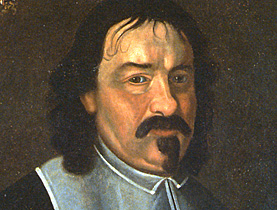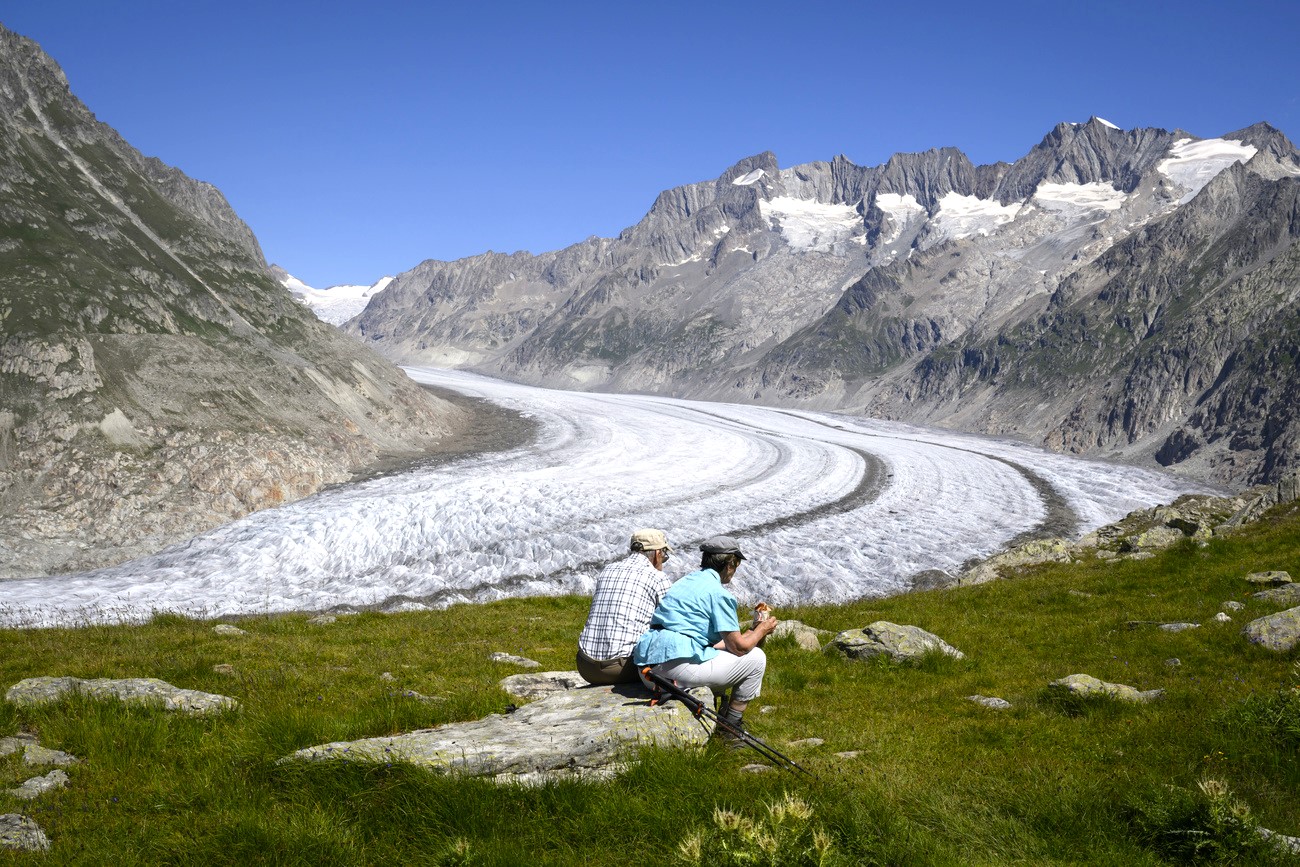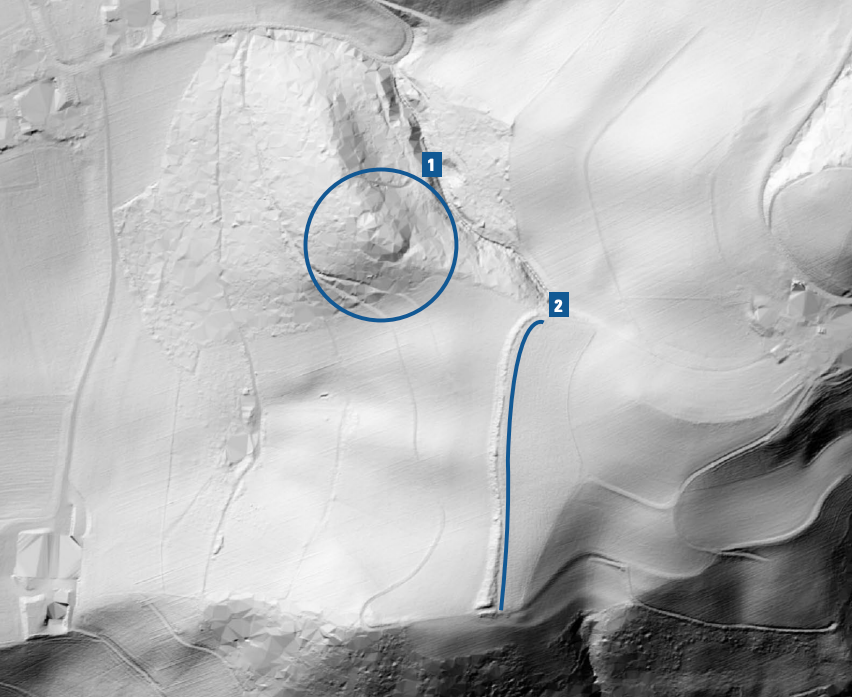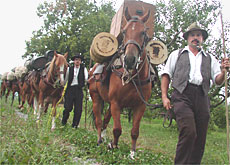A trailblazer remembered

A pioneer with an international outlook, hardworking and astute, Kaspar Jodok von Stockalper, born exactly 400 years ago, is the pride of his native canton of Valais.
Largely through trading activities, he amassed a fortune that can hardly be dreamed of today. As one popular guide book puts it, in an age when it took an ordinary person ten years to earn enough to buy a single cow, Stockalper could have bought cattle to stretch all the way through Valais and on to Geneva – some 250 kilometres – and still have money left over.
In many ways Valais was very different in Stockalper’s time from what it is today. It was not even part of Switzerland. Thanks to its passes, it had always been a transit route to Italy, but the Simplon had fallen into disuse until Stockalper revitalised it and made it into a major trading highway.
In this anniversary year, the Simplon tourism organisation is keen to show visitors Stockalper’s legacy, and how it fits in to the canton today.
Though much has changed, many of the challenges that faced Stockalper still persist.
Getting over, getting through
Stockalper’s mule track over the Simplon pass was an expensive undertaking, and heavy on upkeep. Only a man with his power and wealth could build it, and after his time it fell into disuse. It has recently been restored as a hiking trail: it takes two days to cover the distance on foot from Brig to Gondo on the Italian border.
The history of the Simplon area is reflected in the three historic roads which lead up to the pass – and the tunnel beneath it. More than a century after Stockalper, a very different political figure needed to use the route: Napoleon had a new, much longer, road built, whose gradient was gentle enough to transport cannon, and which soon became a tourist attraction in its own right.
Parts of that road are still there, offering a leisurely alternative to the third road built in the 1970s and 80s with galleries and bridges which made it usable throughout the year. By the modern road it takes well under an hour to cover the 42 kilometres from Brig to Gondo.
An even faster route is the rail tunnel, opened in 1906, which carries passengers from Brig to Iselle – just over the border in Italy – in only 20 minutes.
The story of the pass and its routes, and their impact on the local economy, is kept alive in the Ecomuseum in Simplon-Dorf. It has been set up in the “Alte Gasthof”, itself a relic of the blossoming trade route, which provided accommodation and storerooms for travellers on the pass.
Natural hazards
Modern engineering has solved some of Stockalper’s problems – most notably the difficulty of keeping the route open in winter in this avalanche-prone region – but nature is still unpredictable.
Although the Simplon pass road is now normally usable throughout the year, in 2009 there was so much snow that it had to be closed for a few days. Even in mild winters, the road can only be kept clear by constant use of snow ploughs.
But it was not snow, but rain which triggered one of Switzerland’s most spectacular recent disasters: the mudslide which swept through Gondo in October 2000, killing 13 people and destroying half the village. The Stockalper tower, originally a warehouse for items in transit and lodging for the muleteers, was partially swept away.
After the 2000 disaster the tower was reconstructed in a much-praised combination of traditional and modern, and is now a hotel and restaurant, offering some of the same services it provided to Stockalper’s men, but rather greater comfort than they probably enjoyed.
Terrain
The terrain itself was of course not always easy to cross. The shortest route from Simplon-Dorf to Gondo leads through the impressive Gondo gorge, which was long regarded as impassable. The Stockalper way goes through it, but he also built a much longer alternative route.
The short route now includes a typical Swiss feature undreamed of in the 17th century: a military bunker. The underground fortress, first built about 100 years ago, was a secret installation until all such facilities were declassified in the 1990s. Its cannon could stop any enemy advance through the narrow defile. Guided tours of the fortress are now available.
Much of what for Stockalper was a problem, is for modern tourists an attraction. Merely to drive over the Simplon and to admire the views at the top is a pleasure; more active visitors who hike the 1500 meters up to the pass and the 900 meters down – and who do not have to keep a constant eye on overladen mules – enjoy an experience to remember.
Even the steep cliff faces are today a plus. Near the entrance to the Gondo gorge is the Gabi-Simplon via ferrata: fixed by carabiner to a guide wire, those wanting a bigger challenge than merely walking can make their way more or less vertically up rungs fixed in the rock.
Stockalper in Brig
The most obvious relic of Stockalper’s time is the palace he built himself in Brig, with its three towers crowned by onion domes. It was used both as a warehouse for his business empire, and to show off his wealth.
It is a major tourist attraction, but also houses some of the town’s administrative offices, and a restaurant which Stockalper himself would doubtless have appreciated: its owner is a member of the highly successful Swiss culinary national team.
What he would make of some of the events that are now held in the palace courtyard is a different matter: film shows, concerts, exhibitions and even a national climbing competition.
But as an innovator and a trailblazer perhaps he would have been pleased to see his legacy being adapted to very different times.
Julia Slater in Brig, swissinfo.ch
Kaspar Jodok von Stockalper was born on July 14, 1609 and died on April 29, 1691.
He was active in the political life of Valais as well as in business of all kinds.
From the age of 20 he held various political offices, culminating in that of Landeshauptmann, the highest office of all, which he held for eight years from 1670.
In 1678 his enemies managed to remove him from power; in 1680 he fled to Italy in fear for his life.
He returned to Brig in 1685, but never regained his former power.
As a merchant he held monopolies in several important items, most notably salt which was essential for preserving food, and also for cheese making.
He also made money from mercenaries, whom he hired out to different rulers.
He had a trading network that stretched from Italy to Flanders and Spain.
He wrote in six languages in his account books.
There are a number of warehouses on the Simplon route, which enabled him to store his goods until market conditions were at their most favourable.
Stockalper also had mining interests, notably in iron, not far from Brig, and in gold near Gondo.
He was married twice and had 14 children, but only one son lived long enough to continue the line.
A pious Catholic, he founded a Jesuit monastery and Ursuline convent in Brig, which provided education for local boys and girls respectively.
He was buried in a church in neighbouring Glis, to which he had made large donations during his lifetime.


In compliance with the JTI standards
More: SWI swissinfo.ch certified by the Journalism Trust Initiative












You can find an overview of ongoing debates with our journalists here . Please join us!
If you want to start a conversation about a topic raised in this article or want to report factual errors, email us at english@swissinfo.ch.